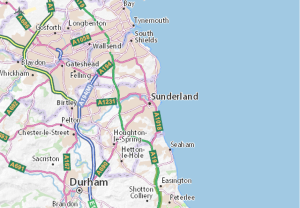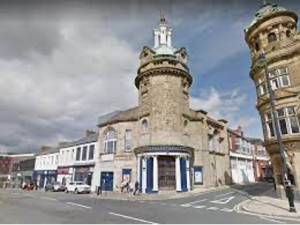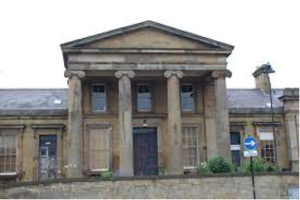Introduction
Sunderland is a city rich in history and culture, and its historic main street is a must-see for anyone interested in learning about the region’s past. Along High Street are several historic structures with an exciting history and link to the region. Visitors can understand Sunderland’s past and current culture by journeying down the city’s ancient main street (Collier. et al., 2015). Heritage interpretation is an essential tool for guiding visitors through historical sites, and it can be beneficial in the context of Sunderland’s historic main thoroughfare. This strategy involves using various methods, such as telling tales, engaging displays and presenting information in a multimedia format to enthral visitors and provide them with a more in-depth understanding of their research location. Heritage interpretation aims to increase visitors’ understanding and appreciation of a community’s past, values, and practices by building a meaningful link between them and a location’s cultural legacy (Blockley & Hems, 2013). When applied to a guided local walk, legacy interpretation may provide tourists with a more in-depth understanding of a city’s heritage and aid them in acquiring an appreciation for the specific cultural traits of the region they visit.

Theme
Art and Architecture
This guided walk will concentrate on art and architecture. We will see some of the city’s most prominent landmarks, including museums, galleries, and public buildings. We will educate you on the different creative currents and architectural tendencies that shaped the city’s development from ancient times. We will also learn about some of the most well-known artists and architects who have made significant contributions to the city during the trip.
The first step in creating a guided local walk with a specific theme is to identify that theme and the primary sites of interest that will be emphasized throughout the trip. The study’s primary focus will be on certain architectural styles, such as Art Deco, Beaux-Arts, or Gothic Revival, as well as buildings or sites indicative of such types. One of the primary areas of interest could be information on the architects or builders responsible for the design of the structures, in addition to any historical context in which they were erected and any cultural or social significance associated with the structures.
Following the determination of the overarching theme as well as the critical points of interest, the next stage will be to create a storyline that will connect the many stops along the guided tour and provide a consistent description of the voyage. The story should be interesting, enlightening, and relevant to the topic; additionally, it should highlight the distinctive qualities that distinguish the city’s architectural legacy. For example, a tour of Art Deco buildings might contain a narrative that discusses the cultural and socioeconomic reasons that contributed to the style’s appeal in the early twentieth century. Smooth lines, vibrant colours, and geometric forms are among these aspects.
On the day of the walk
Within the Wee, start timings and meeting spots are well publicized and marked with signage. Begin you within event’s location journey at a conspicuous and central location, such as a café, museum, or tourist centre. Beginning the hike at the information booth maintained by the Friends organization is one option to consider. Maintain punctuality at the beginning and end of your walks, but be adaptable in case of unexpected events. The walk guide needs to make allowances for the group member who moves the slowest. Wes has to ensure that the walk’s purpose is clear to everyone who signs up for it. We ought to strive to restrict group sizes to a maximum of thirty. When more people are in your group, some are bound to get left behind, and if you wait for them, your time will be off.
The route
A Walk through Time
We will start our walk at the Sunderland Museum & Winter Gardens, where we’ll be able to see a range of exhibits and displays about the city’s history and culture. This will help to place our walk into context for you. We will take up where we left off today by walking along High Street West, one of Sunderland’s longest streets. We can see a number of significant buildings along this route, including the Empire Theatre and the building that used to be the Co-operative. Following that, we will visit Keel Square, which was built in 2015 to commemorate Sunderland’s rich heritage in the shipbuilding industry. The huge monument of a ship’s prow in the plaza serves as a memory of Sunderland’s past as an industrial hub.
Following that, we will continue our walk down Fawcett Street, which is lined with historic buildings and well-known monuments. We can see the Sunderland Empire Theatre, which used to be a Joplings retail store before being converted into a cultural venue, as well as the Old Fire Station, which is also now a cultural venue. The Sunderland Minster, generally regarded as one of the city’s oldest structures, will be our next destination. The cathedral was built in the seventh century, but it has experienced numerous reconstructions and refurbishments throughout its existence.
We will resume our walk down High Street East, which was once the main business thoroughfare in Sunderland. A number of ancient buildings can be found along this route, including the building that once held the Bank of England and the Sunderland Savings Bank. We will end our walk at the Monkwearmouth Station Museum, which is housed in a structure that was once a railway station. The museum provides a fascinating look into the history of railroads in Sunderland, with a large number of relics and exhibits on the subject.
In our walk it is critical that we use legacy interpretation methods throughout our stroll to help bring the city’s past to life. This can be done by displaying how the city has evolved over time using maps, photographs, and other visual tools. This can also be done by using storytelling and other tactics to engage your audience and make the experience more unforgettable.




The guided tour must be well-organized and planned to offer guests a clear idea of where they are going and why they are there. The walk guide must be knowledgeable and enthusiastic. They must also be able to respond to enquiries and provide any further information that may be necessary. Furthermore, the tour should be engaging and fascinating, allowing guests to study the structures or locations in issue and obtain a greater knowledge of their cultural and historical significance. Several techniques may be used to improve the heritage interpretation component of the guided local walk that is being delivered. For example, the tour guide may employ props or visual aids to help illustrate important points or provide context for the structures or locations they are explaining.
The interpretation
Bring heritage to life.
The interpretation will be vital in bringing the city’s cultural past to life throughout the guided walk. We will get the opportunity to learn about the historical events, artistic movements, and architectural styles that contributed to the city’s growth. The interpretation will employ a variety of media to engage and educate visitors, including audio tours, interactive displays, and live interpretation. As a result of the interpretation, visitors will be encouraged to appreciate the worth of the city’s cultural past. We will get the opportunity to examine how the city’s art and architecture have contributed to establishing its identity and how it continues to influence the lives of the city’s people today.
Things You Must Do
We will make ensure that the guided walk is adequately covered by insurance. The walk can be included in the cover for the rest of the event. Make ensuring that any risk assessment you undertake for the event takes the path that attendees will take while walking into account. In the case of an emergency, ensure that you maintain regular phone or radio connection with the staff and volunteers operating in the main event location. There should be no youngsters on the walk whom an adult does not supervise unless the Criminal Records Bureau has vetted the guide (Staiff, 2016). Leaving children alone is dangerous even if you have passed a CRB check. Make it a point to notify at least one additional person arranging the event of your plans and the time you expect to return. The lead walk guide should be free to do other event-related activities during the day. They will need to dedicate their complete focus to the walk and nothing else; thus, other volunteers and staff members should handle all other obligations.
What to do if it begins to rain
While we should make every attempt to stick to the established walk times, we should also be prepared to be flexible if required. Consider the following: If the rain falls heavily, not just one of the hikes, but all of them, may have to be cancelled. Furthermore, if it continues to rain, expect to see fewer people. We also need to consider if you will have the minimum number of participants for the walk. If practicable, you should supply umbrellas for individuals participating in the walk. Adjust the stroll such that it takes a path that is concealed from view if possible.
The thing to be considered
It is advised that guided walks take at most an hour. If it goes on for any longer than this, most people will lose interest, regardless of how entertaining it is. Ensure you are attempting to pack only a little into the time provided to you. A shorter period will also allow the guide to take a rest. Check that there are enough volunteers to assist with the walk. This will save individuals from becoming lost, improve reaction time in the case of an emergency, and provide those who can answer questions. Make it a point to walk at least twice, if not three times, during the day. As a result, more people will be able to participate, particularly those who may only be aware of the walks later in the day. Consider limiting the number of people who may participate in the walks.
If the walks become popular, one method for ensuring that the number of participants is at the facility’s capacity is to sell tickets. Check to ensure that the walkway is easily navigable by people of all abilities, including those who use wheelchairs or have eyesight impairments. When people inquire about it, you should clarify if it is only partially available. Some participants may need help to keep up with the entire pace of the walk or complete it entirely if it is taking place on a hill. The slowest member of your party will set the pace of the walk. Planning the walk so people can leave at any time is a good idea, but you must be prepared to take them back to the beginning point or the principal event area if they do. There is also the option of including some rest periods in the design. It would not be difficult to take a break at a park café around halfway through the journey.
Conclusion
In conclusion, a guided local walk with a specific theme that includes historical interpretation may be a useful tool for finding and understanding a city’s cultural heritage. If a narrative is established, a key theme and main points of interest are identified, and interactive and engaging strategies are used, visitors can develop a more meaningful connection to a location’s history and culture and a greater understanding of the place’s specific qualities. A guided tour with a special concentration is an excellent way to learn about a city, whether you are interested in its historic architecture, art, or history. Sunderland’s rich legacy and history can be better understood by taking the historic main street walk, which is a fantastic chance for tourists.
References
Blockley, M., & Hems, A. (2013). Heritage interpretation. Routledge.
Collier, M., Ley, M., & Bowey, K. (2015). String Bedes, Walk 3 August 2106.
Hems, A., & Blockley, M. R. (Eds.). (2006). Heritage interpretation. Routledge.
Paskaleva, K. A., & Azorin, J. A. (2010). Developing integrated e-tourism services for cultural heritage destinations. International Journal of Services Technology and Management, 13(3-4), 247-262.
Paskaleva, K. A., & Azorin, J. A. (2010). Developing integrated e-tourism services for cultural heritage destinations. International Journal of Services Technology and Management, 13(3-4), 247-262.
Staiff, R. (2016). Re-imagining heritage interpretation: Enchanting the past-future. Routledge.
 write
write